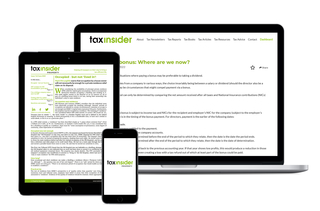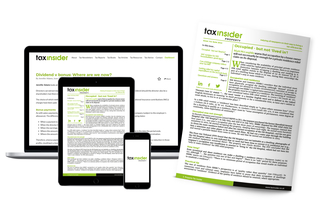New articles published
in December 2025
-
Who’s Taxed on Rental Income? The 50:50 Rule Explained
It is common for assets such as an investment property to be jointly owned by spouses (or civil partners). As a general rule, both spouses are treated for income tax purposes as beneficially entitled to the rental income in equal shares (commonly known as the ‘50:50’ rule).
The 50:50 rule generally applies while the couple are living together (although see below for exceptions to the 50:50 rule). For these purposes, a married couple are treated as ‘living together’ broadly unless the spouses are separated under a court order or by deed of separation, or they are in fact separated in circumstances in which the separation is likely to be permanent.
Mark McLaughlin points out that identifying who is taxable on property rental income is not necessarily a straightforward task.
-
Property Incorporation: The Tax Reliefs That Matter
Property portfolio incorporation triggers substantial tax charges, including capital gains tax (CGT) on the transfer and stamp duty land tax (SDLT) (or land and buildings transaction tax (LBTT) in Scotland, or land transaction tax (LTT) in Wales) on the acquisition.
Without appropriate reliefs, these costs can make incorporation prohibitively expensive, negating the financial benefits of corporate ownership.
Nick Wright highlights crucial tax reliefs that can make or break property portfolio incorporation.
-
Broken Items in Rentals: When Can You Claim RDIR?
When tenants occupy a rental property, even with the best care, certain aspects of the property will show signs of wear over time.
For instance, carpets may become worn, walls may develop scuff marks, plaster may crack, and paintwork may chip. Landlords generally anticipate this gradual deterioration and budget for repairs and maintenance, which can be claimed under the 'repairs' category on their tax returns. However, broken items come under different rules.
Jennifer Adams looks at when landlords can make a claim under the 'replacement of domestic items relief' (RDIR) for the cost of broken items in rental properties.
-
Selling a Buy-to-Let? Which Costs Are Tax-Deductible?
Many private landlords, particularly those with one or two rental properties, are now quitting the rental market. In recent years, landlords have been subject to a raft of unfavourable tax changes, including the restriction of interest rate relief and the end of the furnished holiday lettings regime. Another example is the introduction of, and recent increase in, the stamp duty land tax supplement, which has made it expensive for landlords to expand their portfolios. Further, the Renters’ Rights Act 2025 will, when it comes into effect, give renters considerably more rights while eroding landlords' rights
Sarah Bradford outlines the type of costs that a landlord may incur while a buy-to-let property is on the market and the extent to which tax relief is available for those costs.
-
Q&As with Arthur Weller
Some of our most popular articles
-
Joint property letting vs partnerships
Property partnerships seem popular these days – typically, as a stepping-stone to greater things. Regular readers will know that I have long criticised HMRC’s published position on whether a property partnership exists, as distinct from simply co-owned property. My argument is that HMRC has drawn up its guidance to set an unreasonably high threshold to ‘make the grade’ as a partnership.
Lee Sharpe looks at whether a joint property letting activity amounts to a partnership, and why it is relevant to landlords.
-
Main residence relief and multiple residences
Most people do not expect to have to pay capital gains tax (CGT) when they sell their home. Private residence relief (also known as main residence relief or principal private residence relief) normally applies in full when the property has been the taxpayer’s only or main residence throughout the whole period for which they have owned it.
Sarah Bradford outlines the concept of a ‘main’ residence for capital gains tax purposes.
-
That old boiler: Repairs or improvement?
The government (HMRC) has become increasingly worried about the volume of small and medium-sized enterprise research and development (R&D) tax credit payments where a company claims to have undertaken eligible R&D activity (and it is important to keep in mind that only certain types of R&D may qualify – there are a lot of criteria).
Lee Sharpe looks at tax aspects of modernising property and the risk of disallowance as improvements that constitute capital expenditure, losing income tax relief in the property business.
-
Investing in commercial property: Tax implications
Whether to buy commercial or residential property depends on various factors, not least the more beneficial tax system for commercial lets and whether an individual or a company is purchasing the property. The government wishes to encourage commercial lets and therefore permits a more generous tax regime than residential lettings.
Jennifer Adams considers some important tax benefits of investing in commercial property.
-
Q&As with Arthur Weller
Subscription Benefits
We asked our subscribers what they love about Property Tax Insider.
These are the top 7 reasons that they gave us:
Monthly Newsletter
Property Tax Insider…





